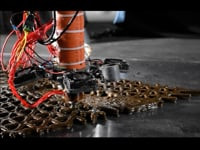
Radicant
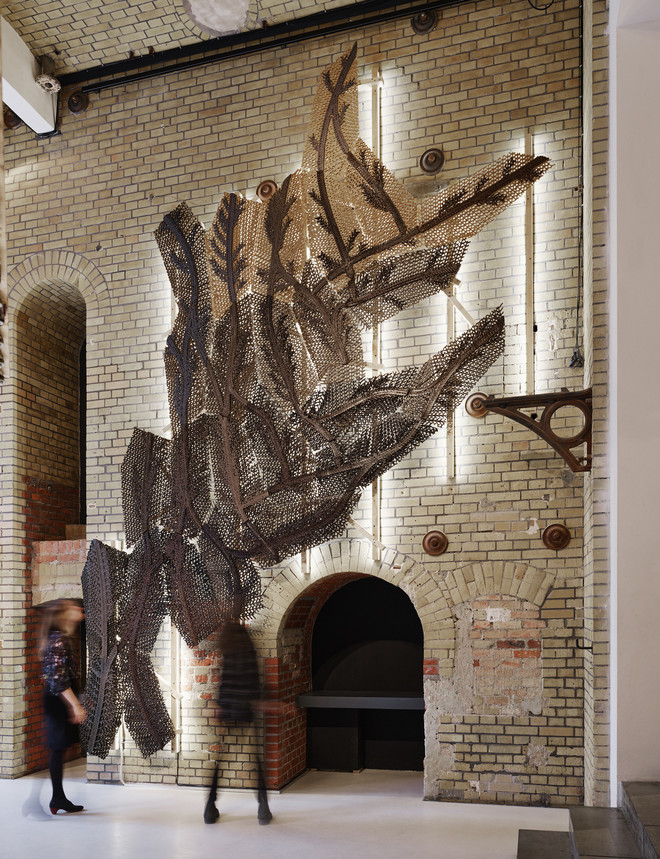
Radicant examines the fabrication of a biopolymer wall panelling system. It is part of a broader examination of waste-stream based biopolymers for architecture, and how we might extend the circular design framework for biopolymer composites in architectural applications. In Radicant, we work with bone glue, a waste material from the meat industry. The bone glue acts as a binder into which we mix cellulose fibres from other waste streams; bark, paper, recycled linen (cotton) and seagrass. It is robotically 3D printed in a leaf-life filigree pattern.
Radicant was developed within the CITA-EMA project and was part of the Living Prototypes exhibition at Aedes Architecture Forum in Berlin from 10.12.2022 - 25.01.2023.
Design
Radicant asks what the design, fabrication and creation of a bio-based architecture can be. It is made as a bespoke panelling system 3D printed from different compositions of biopolymer. The tiles are materially graded composing different waste stream materials creating a six meter tall branched interweave.
Fabrication
The panels use a bespoke printing set up in which the heated biopolymer material is extruded into intricate patterns. The patterns are filigree in nature allowing the water content to evaporate the panel to set in a controlled manner.
Design Pipeline
A design-to-fabrication framework capable of spanning various modelling paradigms and incorporating high-level information on site and architectural concepts, a comprehensive data pipeline has been established for Radicant. The design pipeline for Radicant begins with a 3D scan to create an accurate digital model of the wall to which the paneling system will be attached. This model is then used to create a volumetric representation using a high-resolution voxel grid, which serves as the foundation for the creation of information layers, including local height, structural requirements, and pre-existing wall features.
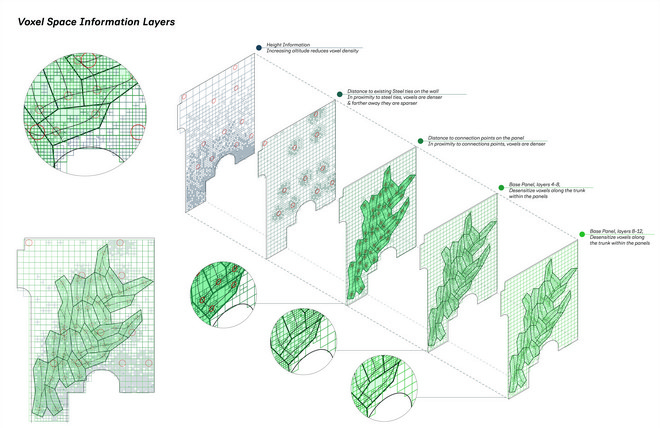
After the voxel-based model is populated with this underlying contextual information, it is then utilized as the basis for geometry and property generation that is informed by the material and fabrication properties, geometrical constraints, and design considerations. Instead of relying on an intermediary model to derive the print path, we directly create the print path from the volumetric model and associated information layers. This streamlined process eliminates the need for additional conversions or translations between models.
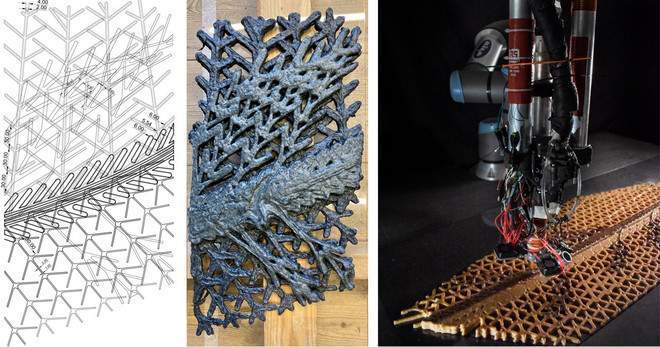
The wall piece is designed to be used as an interior wall or cladding. Due to its pentagonal geometry, we can assume that it can be produced and tiled. Its design is influenced by information about the site and the biomaterials covering it. In the proximity of the trunk, the biomaterial is denser, whereas far away, it is less dense. Each branch rising from the trunk is open (as well as its leaves) when it is far from the steel ties (located on the brick wall) and closes when it approaches them. As with the silk tree, it closes its leaves or folds them inward when touched.
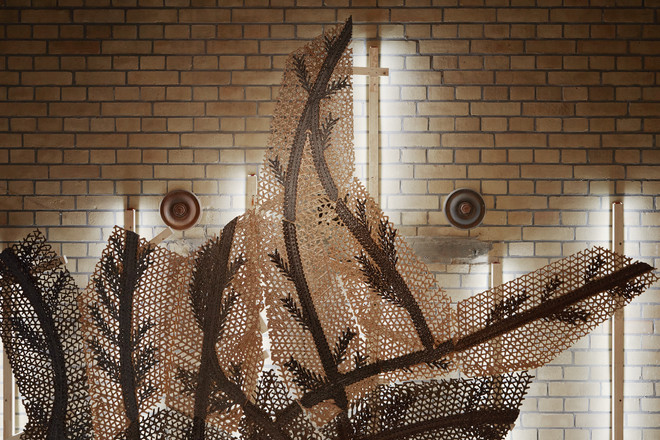
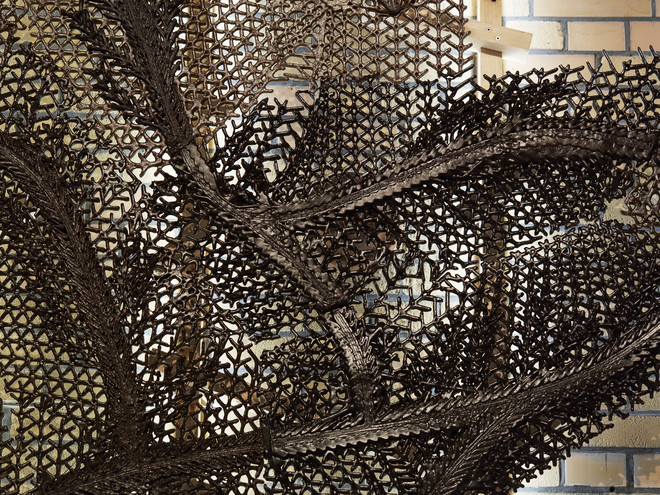
● Nicholas, P, Lharchi, A., Tamke, M., Valipour Goudarzi, H., Eppinger, C., Sonne, K., Rossi, G., Ramsgaard Thomsen, M., A Design Modeling Framework For Multi Material Biopolymer 3d Printing (2023) in Proceedings of Advances in Architectural Geometry (AAG) conference, 04-07 October 2023, Stuttgart.
● Lharchi, A., Tamke, M., Valipour Goudarzi, H., Eppinger, C., Sonne, K., Nicholas, P., Ramsgaard Thomsen, M., Sensing and Augmenting for Adaptive Assembly Strategies (2023) in Proceedings of the eCAADe conference 2023 Digital Design Reconsidered, 20-23 September 2023, Graz.
● Tamke, M., Chen, Tzu-Ying., Carrasco, O., Ryan, Á., Bouchi, D., Ramsgaard Thomsen, M., Nicholas, P., Dubor, A., Cabay E., Bangsgaard, A., Dörstelmann, M., Naldoni, L., Markopoulou, A., Knippers, J. “Another Logic For Architectural (Bio-) Design and Fabrication - Lessons From The Living Prototypes Project.” In Proceedings for the CEES 2023 Conference, edited by M. Theodoridou Morrow, R., Scott, J., Bridgens, B. Funchal, Portugal: Itecons - Instituto de Investigação e Desenvolvimento Tecnológico para a Construção, Energia, Ambiente e Sustentabilidade, 2023












